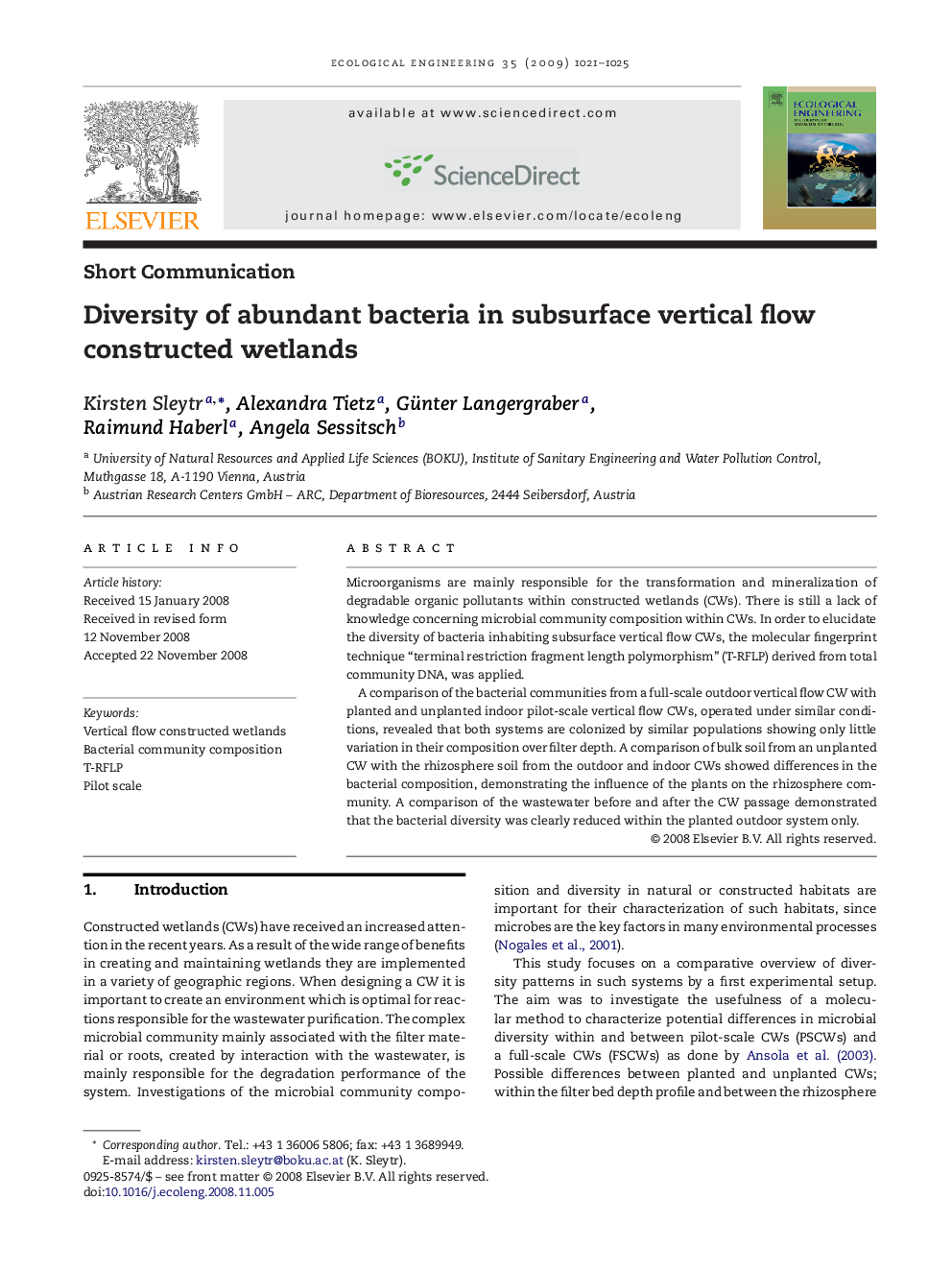| Article ID | Journal | Published Year | Pages | File Type |
|---|---|---|---|---|
| 4390901 | Ecological Engineering | 2009 | 5 Pages |
Microorganisms are mainly responsible for the transformation and mineralization of degradable organic pollutants within constructed wetlands (CWs). There is still a lack of knowledge concerning microbial community composition within CWs. In order to elucidate the diversity of bacteria inhabiting subsurface vertical flow CWs, the molecular fingerprint technique “terminal restriction fragment length polymorphism” (T-RFLP) derived from total community DNA, was applied.A comparison of the bacterial communities from a full-scale outdoor vertical flow CW with planted and unplanted indoor pilot-scale vertical flow CWs, operated under similar conditions, revealed that both systems are colonized by similar populations showing only little variation in their composition over filter depth. A comparison of bulk soil from an unplanted CW with the rhizosphere soil from the outdoor and indoor CWs showed differences in the bacterial composition, demonstrating the influence of the plants on the rhizosphere community. A comparison of the wastewater before and after the CW passage demonstrated that the bacterial diversity was clearly reduced within the planted outdoor system only.
